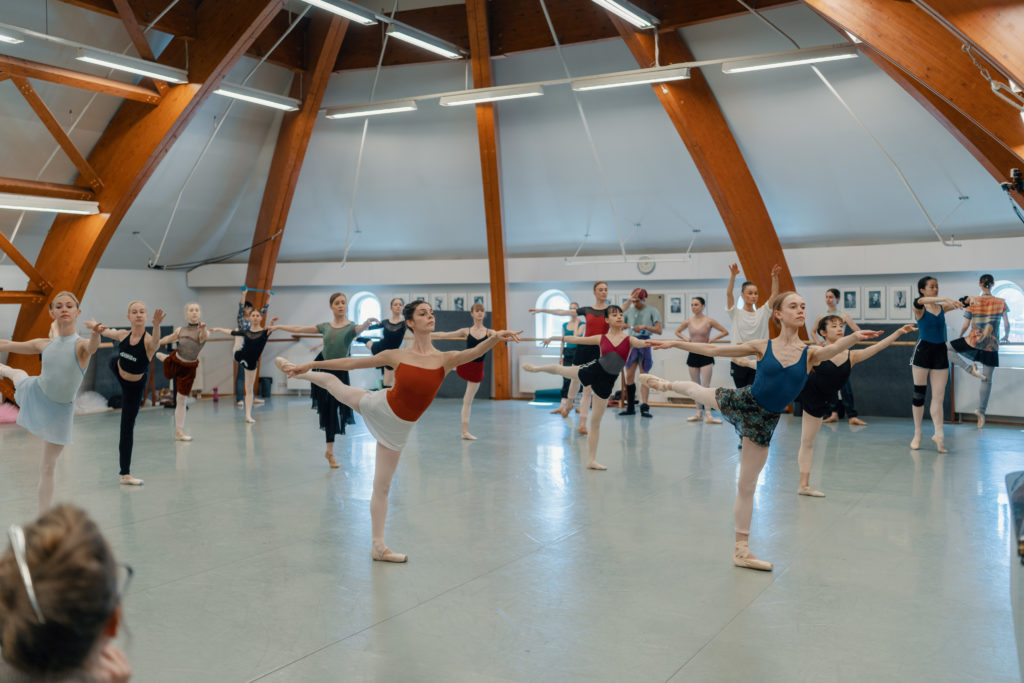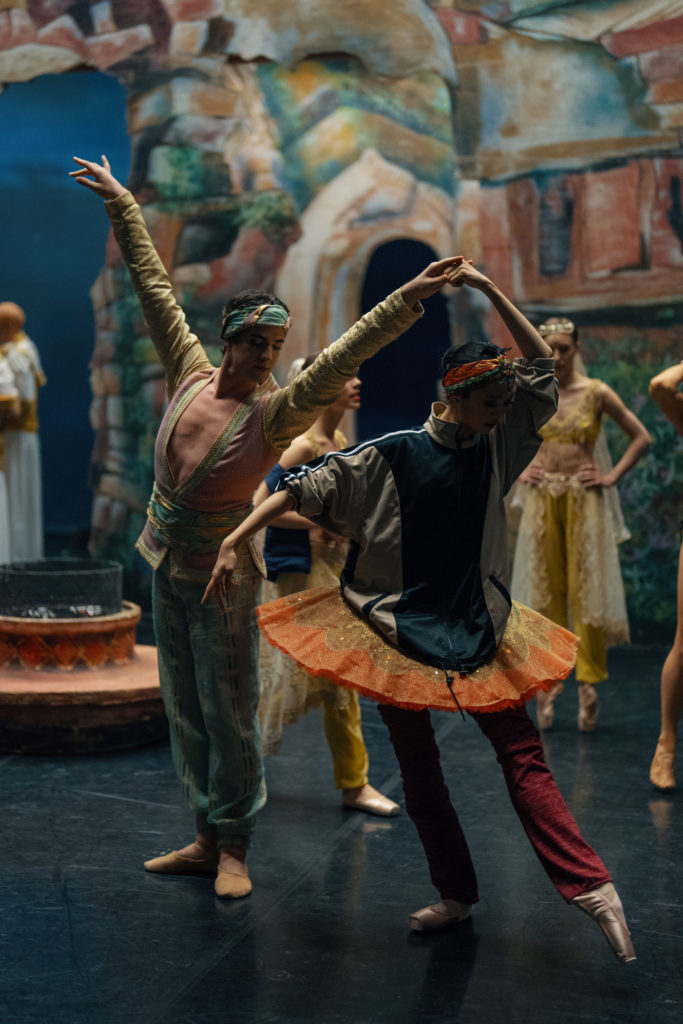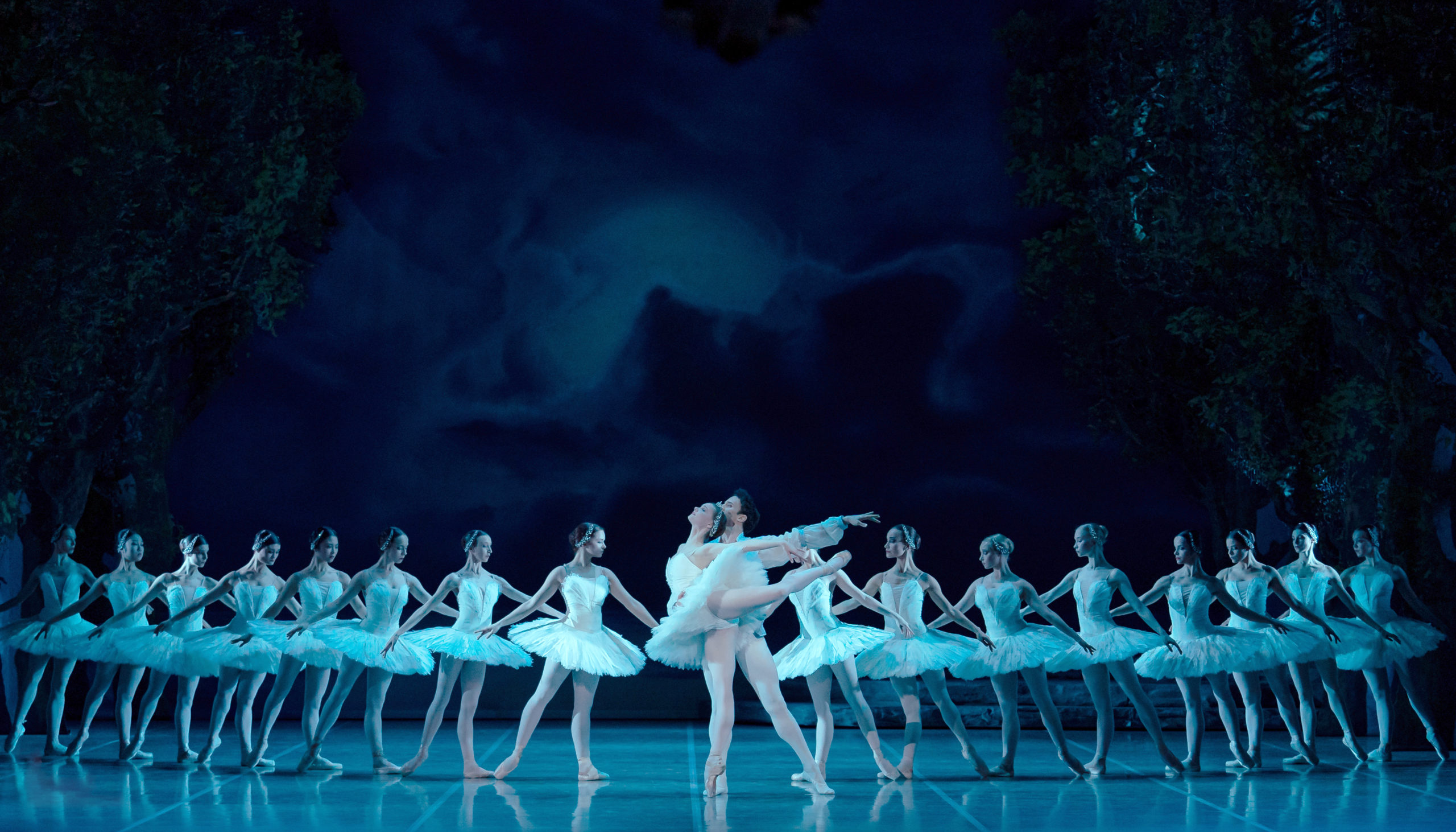Estonian National Ballet: The Bustling Baltic Company Reflects a Mix of Cultures
While dancers flit down hallways to coaching sessions and costume fittings, men practice tours en l’air in one room and women pirouette in another. They could be ballet studios anywhere, but given its proximity to Scandinavia, Russia and continental Europe—and dancers from Estonia and from all over the world—Estonian National Ballet reflects a mix of traditions.
“I think for now I found the place I was looking for,” says soloist Cristiano Principato, originally from Novara, Italy. He joined Estonian National Ballet as a demi-soloist just before the COVID-19 pandemic, so his tenure in the Tallinn-based company has been marked by stops and starts. And yet, he says, “every day I’ve learned something new. I’m always pursuing something and growing.”
A typical week for him might involve being coached as the prince in Swan Lake, performing Anna Karenina one night and the lead in La Bayadère two nights later. It’s a dizzying schedule, particularly for a company nestled in a country with less than 1.5 million people.

Artistic director Linnar Looris, originally from Estonia, took the helm of Estonian National Ballet in 2019 after a career performing with Houston Ballet and Birmingham Royal Ballet. His assistant to the artistic director, Jared Matthews, also danced with Houston Ballet. Looris replaced Thomas Edur, another Estonian who enjoyed a career abroad and is now choreographing Swan Lake on the company.
“We’re a big company of 60 dancers,” says Looris. “And while we probably can never compete with The Royal Ballet or Paris Opéra, as a strong middle-class European classical ballet theater, we’ve situated ourselves pretty well.”
A Long History
Ballet’s roots in Estonia run deep: The opera house in Tallinn was built in 1913 and it has endured bombings, revolution, independence from the former USSR, and COVID-19. Audiences remain loyal, often flocking to multiple shows each week. Recently Looris received several invitations for the company to perform abroad, replacing Russian ballet companies that had been previously scheduled. Estonian National Ballet tours Ireland for the first time this winter.
Wandering the hallways backstage reveals how much goes into the constantly changing productions. A bustling costume shop creates hundreds of new costumes every year that, when productions go off the repertoire, are rented out to ballet companies worldwide. Set designers construct scenery and props inside a warehouse-like space. A guesthouse for visiting artists, designers and important visitors is even tucked away on the top floor of the opera house so that if a performer has a break between two daily shows, they can literally walk out of the wings, down the hall and into their room. “We found it was more economical than renting hotel rooms,” Looris says.

Estonia, a member of the European Union and NATO, shares a border with Russia, and Tallinn is about 125 miles from it. While dancers and staff remain aware of Russia’s war in Ukraine, they focus on their art as a way to contribute. “When the invasion in Ukraine began, I was reading the news constantly, then I had to stop,” says Principato. He has tried to channel his anxiety and sadness into gratitude. “It made me see things differently. Like how lucky we are.”
The company has been supporting Ukrainians with discounted tickets and job opportunities. (“We recently hired a Ukrainian pianist,” says Looris.) Weeks before their summer break, dancers and staff regularly visited the set department, where a 10-meter net stretched between two poles, covered in small, hand-tied strips of cotton cloth. Between shows, company members and staff tied pieces of cloth onto the net, which served as camouflage for Ukrainian soldiers. So far, Estonian National Ballet has sent nine military nets to the front lines, as well as bulletproof-vest covers made in the costume shop.
A Nonstop Performance Schedule
Soloist Madeline Skelly performed with Orlando Ballet II, Houston Ballet and BalletMet before she and her husband, William Newton, also a dancer with the company, moved to Tallinn. Apart from being away from family, she says, the hardest adjustment has been the company’s repertory theater schedule, where different shows alternate weekly throughout the whole season.
“There are weeks when we have multiple full-lengths onstage, and of course this is a big challenge,” Skelly says. “As with most companies, the corps de ballet has the busiest schedule, sometimes onstage five or six times a week, including operas. For a young dancer that is craving performance experience and wants to find comfort onstage, this is exciting!”

As a soloist, Skelly says she’s had to learn how to pace herself. “Unless I am preparing for a role that is brand-new to me, I try not to look ahead more than two or three weeks,” she says. “This helps me to not get overwhelmed with the length of the season.” Estonian National Ballet’s season runs for 46 to 48 weeks a year.
One of several Americans dancing with Estonian National Ballet, Skelly joined in part because she knew Looris from when he had previously danced with Houston Ballet. On average, 750 dancers apply to audition every year. While that number dipped during COVID, Tallinn Music and Ballet College, which recently moved into a new state-of-the-art building, attracts dancers and teachers from around the world.
Skelly notices a difference between American audiences and those in Estonia. “Here, sometimes they will join together with a synchronized, steady clap, which is a really exciting and intense response for us as dancers. Overall, I love how important the theater is to Estonian culture. I truly feel like we are a valued, important and absolutely necessary part of the Estonian community. To be treated in such a way is a gift.”






